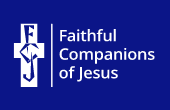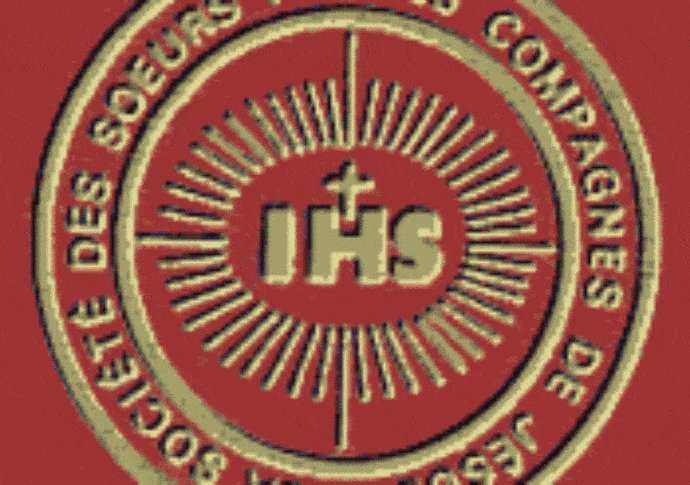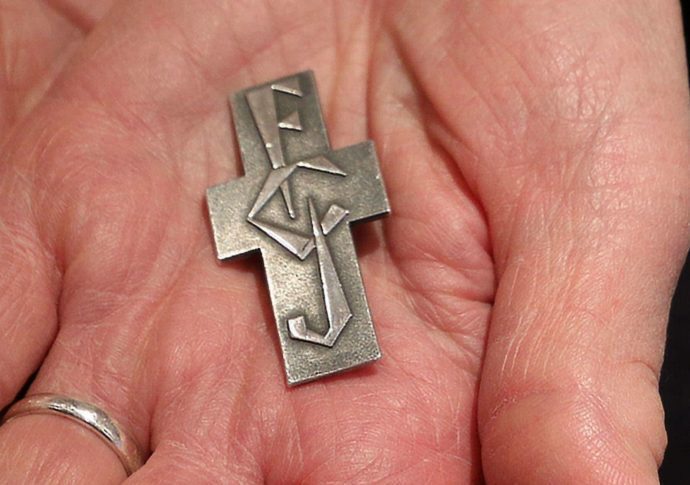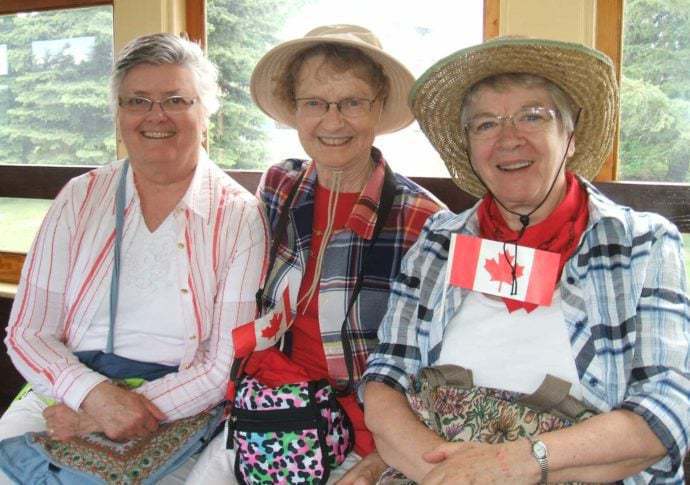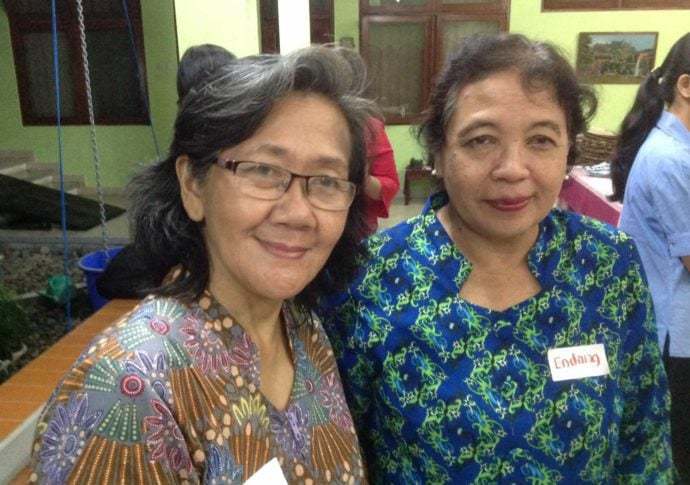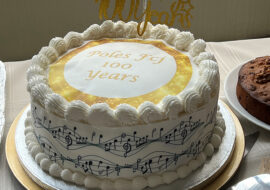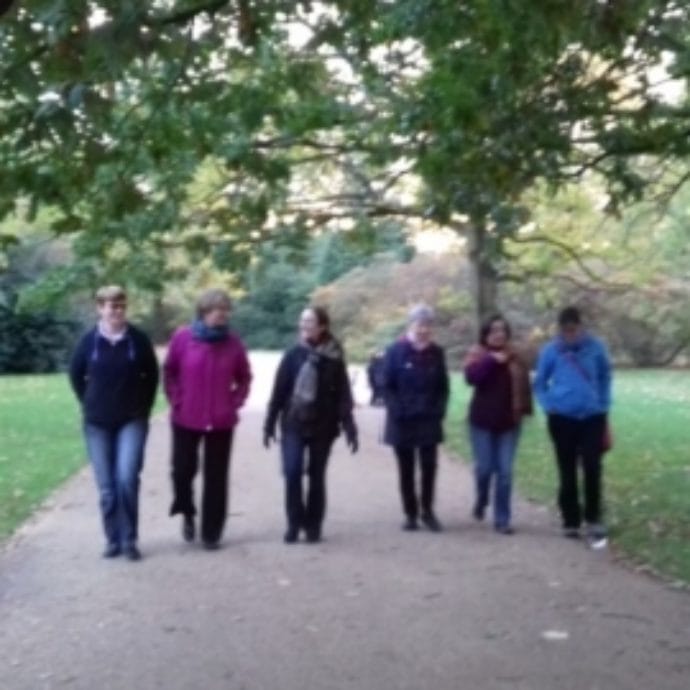An article by Margaret Harcourt Williams, former FCJ Archivist, originally published in the 2023 Catholic Archives, the journal of the Catholic Archives Society. The Catholic Archives Society is a voluntary organisation founded in 1979 with the aim to promote the care of Roman Catholic archives through its work and publications.
This paper is adapted from a talk originally scheduled for the Society’s 2020 and 2021 conferences and eventually given at the Conference in Hinsley Hall in May 2022. Titled Working with the FCJ archives it was a summary of work in the FCJ archives carried out from 2010 to 2022, work that concentrated mainly on revising and updating existing lists and catalogues, discerning a structure and arranging the archives to reflect this, and developing a range of archive policies.
At first, the archives under consideration were those of the FCJ Generalate, meaning they were the archives of the general or central administration of the Society. It was for these archives that a basic arrangement structure was developed and implemented and for which most of the policy decisions were taken although, as explained below, some further archives were added in 2017.
The FCJs have been outstanding in their commitment not only to their own archives but also to Catholic archives in general. Sr Mary Campion McCarren and Sr Denise Mulcahy came to the Catholic Archives Society’s annual conference regularly from the 1980s until early this century and Sr Rachel Duffy served a term on Council a few years ago. Sr Campion had attended the first meeting of what became the CAS and was one of its first chairs; she also served in most other roles on Council as well as visiting and advising other religious communities on their archives. She has always taken an active interest in the Generalate and British Province archives and has been a patient and invaluable source of information.
Additionally, the FCJs have led the way in employing lay people to work with their archives. Among the first was Peter Hughes, who was employed not only by the FCJ Society but also by other religious congregations in the 1980s and 90s. He worked with the Generalate archives, while the British Province archives were catalogued by an archive professional whose sister is an FCJ. After Peter stopped coming, Sr Denise took over the archives in addition to being General Secretary but when she reached to the end of her term of office she returned to Australia and the FCJs looked for another archive professional.
The FCJ Society was founded by Marie Madeleine Victoire de Bengy de Bonnault d’Houet, 1781 to 1858, a French aristocratic lady who was widowed when she was in her early 20s. She established her first religious house at Amiens in France in 1820 and her first house in England in 1830, in Somers Town, shortly before Euston Rail Station opened nearby. She would have known the Gumley property, where the archives are now, as she bought it in 1840 and established a girls’ school there that is still in existence. She was a prolific correspondent, usually signing herself Madame d’Houet, and a great many of her letters survive in the Generalate archives.
These letters are numerous and detailed and reflect the centralisation of the Society’s earlier years. Although this gradually lessened, the FCJs had centralised government until the second half of the 20th century and the archives of the Foundress and subsequent General Superiors are dominated by correspondence with their local representatives. Then, in the 1970s, Regional Superiors with Regional Councils were appointed and later these regions became provinces, each with a Provincial Superior and Council.
The Society is now divided into Areas. Each area leader is responsible for the management of the archives of that area and its predecessor bodies, although on the whole the actual archives remain in the local FCJ house in which they were created. Inevitably, there’s some overlap with the Generalate archives, especially from the Society’s early days, but the archives in the Generalate are not and were never intended to be a comprehensive archive collection of Society-wide documents.
From the start of the project until 2012, the Generalate archives were housed at Stella Maris at Broadstairs in Kent, which was then the FCJ Generalate. In 2012 this changed as the FCJ general administration, including the archives, moved to Gumley House, the sisters’ property at Isleworth in West London.
In early 2010 the Generalate archive was a large one. It was stored in a strongroom with 21 bays of static shelving, each with nine shelves that could hold up to nine boxes, plus one or two small cupboards and some outsize items stored on the tops of shelves. However, some boxes were empty and others held archives of the Society’s temporal administration, that is finance and property, which were not then part of the project. The strongroom had been built fairly recently and had appropriate archive conditions and fittings, plus plentiful supplies of boxes and other preservation-quality equipment, thanks to Peter Hughes’ foresight. However, surprisingly and contrary to expectations, the lists Peter and others had prepared probably covered less than half the archive and there were a good many boxes of unsorted material identified only as ‘transfer’, ‘education’ ‘histories’, ‘research’ or even ‘miscellaneous’. Also, the order in which the boxes were arranged presumably reflected the order in which they’d come to the archives, which meant that items that belonged together were not together, for example the 50 or so boxes of the archives of Mother Philomena Higgins, an early 20th century general superior, were wide apart on four separate shelves.
Nevertheless, Peter’s lists were useful starting point. His method was to give the documents an alphanumeric code, which he called an accession code. He added these codes to the documents in the order he’d received them, thus creating a giant accessions list of several thousand entries. He referred to this method as ‘taking control of the archives’ and seems not to have done any sorting or appraisal. This meant that where the archives he was working with had not previously been divided into groups or series, his lists could seem rather random.
He did not place these accession codes on every document. Sometimes only the top document in a bundle or folder has a code; sometimes every document has one; loose papers in a volume aren’t usually individually coded and often within a volume or notebook the code is inside at the back and not easily visible. This was deliberate, in order that the code wouldn’t cause confusion when the item was finally catalogued in detail. Occasionally he lists the contents of a bundle item by item but sometimes his descriptions are very brief and sometimes there is no description, only the accession code. There’s no obvious reason for the occasional detailed descriptions.
This coding system had disadvantages: duplicates were often given a new code and described differently because they’d come to the archives months or maybe years apart and not been recognised; the out of sight codes were sometimes too well hidden; and most importantly, the archives themselves were hard to find as the lists were awkward to interpret. But Peter did an amazing amount of work and clearly saw it as a step on the way to a comprehensive catalogue. It is a great regret that he never produced one.
There were also various older, pre-Peter lists and notes including an invaluable notebook compiled by Father Apollinaire, the first vice-postulator of the Foundress’ Cause. He devised his own classification system for organising the Foundress’ correspondence, which he called ‘la disposition des Archives’. This is still used today to identify the Foundress’ papers but attempts after Fr Apollinaire’s death to adapt it and continue to use it for organising the papers of her immediate successors as superior seem to have floundered quite rapidly.
Finally, there were more 20th century lists that may have been prepared when the Generalate and its archives were moved to Broadstairs from Belgium in mid to late 20th century. In this case the documents, most of which relate to general superiors, had been placed in a structured order and given a lengthy alphanumeric code. Unfortunately, although it was clear which superiors and houses the documents refer to, it wasn’t clear why they’ve been arranged and identified in that particular way and it was too late to ask.
Bearing in mind the work that had been done already, the best way to start the project was to think of it as a series of phases or layers, with the final aim of reuniting physically archives that belonged together and amending, readjusting and merging all the former lists to reflect this, as well as adding details of the large number of papers that hadn’t already been listed. At this stage, nothing was moved or altered but what belonged together was identified to be rearranged in due course, in archive terms putting the papers in their correct ‘series’ or ‘class’. This would still be a long way from the once-planned descriptive catalogue but with increasing use of technology, especially the opportunities offered by digitisation, such catalogues may not be as necessary as they once seemed.
The first phase (phase 1) began with examining the first box on the highest shelf of the first bay. Most boxes already had a brief identification on them, for example the initial letters of a superior’s name or the dates of a general chapter. Gradually all the boxes were taken off the shelves, the details on the outside checked for accuracy and the contents checked quickly to confirm that they were what the various lists described. All discrepancies were noted. After the last box on the lowest shelf had been checked, the bays and shelves were identified and labelled, so, for example, the top shelf of the first bay became Bay1 shelf 1A.
Phase 2 was going to be a thorough examination of the contents of the boxes, many of which are in French. Even though the superficial examinations of Phase 1 had revealed duplicates, multiple copies, faded photocopies, and documents that belonged in provincial rather than the Generalate archives, nothing was moved or rearranged during that stage. However, short lists of the contents of the bays were prepared in order to make finding documents a little easier. These lists were short, sometimes very short, and preparing them marked the end of the first phase. Each bay was given its own list stating the number of boxes per shelf and giving very brief details of their contents, for example Bay7, Shelf 7F, Mother Philomena Higgins, nine boxes. All these short lists were put on the end the bays to provide a brief indication of what was where. The long lists subsequently made during Phase 2 were much more detailed and became the basis of the finding aids that are now in general use.
Phase 2 involved rearranging the archives themselves by identifying and bringing together whatever belonged together, starting by using all the available lists and notes. This involved a lot of retyping and reformatting as everything had been prepared originally on paper, and where it had been transferred to a computer, this was in a rather cramped and awkward form. However, once they were retyped and available electronically, the lists became far more user friendly and duplicate material and items that seemed trivial or irrelevant became easier to identify for further examination, destruction or transfer elsewhere. Importantly also, the development of the Society and the way it was reflected in the surviving archives became clearer.
The necessary physical rearrangement of the box contents had to begin on the top shelf of the first bay and, importantly, it had to reflect this structure and development. The structure that emerged will probably seem familiar to anyone who has care of the archives of a religious congregation. It starts with the Foundress and her successors as superiors; next is a section on administration and growth; then there are registers and personal papers; these are followed by printed and visual material, and there are a few small categories at the end.
Some of the Foundress’ archive had already been brought together into series, starting with papers relating to her Cause for Canonisation. She was declared Venerable in 1970, and her Cause is still active. These Cause papers begin with formal papers sent to and returned from Rome, not only official material but also many supporting papers, for example testimonials from sisters and others as to her holiness. These are followed by a large collection of her letters to FCJ sisters, to the clergy, her family and other individuals; these are the ones for which Fr Apollinaire developed his classification.
As well as letters her writings include memoirs, books of advice, counsels and instructions and it is interesting to note that her writings began to be copied and presumably circulated very soon after her death. There are also a few family papers and a collection of books and other writings about her. Then, inevitably, her archives end with a couple of boxes of unsorted papers, sometimes very small pieces of paper, that remain unplaced despite the conscientious help of a French speaking volunteer.
The Foundress’ papers are followed by the papers of general superiors, from 1858 until the present day. The size of each succeeding superior’s archive has shrunk over the years and the last few superiors have left relatively few paper records, whereas some of their predecessors left 40 or 60 boxes. Different forms of communication and the introduction of a fixed term for superiors instead of a lifetime appointment are probably what has caused this.
Administration and growth come next, and here the archives cover the constitutions, general chapters and other regular meetings, and also the division of the Society sequentially into administrative regions, provinces and now areas. This is followed by papers relating to the sisters themselves and, broadly speaking, each sister from the early 1970s onwards has her own file: sorting these and the papers of earlier sisters is a work in progress being carried out by a FCJ sister. After that comes visual, printed and reference material, which includes a lot of photographs, and also books and pamphlets written by the FCJs.
That’s a very quick summary of the Generalate archives, including only the main groupings and bearing in mind the need for them to be arranged in a way that reflects both their structure and content.
Understandably, the planned physical rearrangement involved devising a straightforward way to find documents. As mentioned before, finding anything was difficult. A great many documents had multiple different identifications on them, sometimes as many as six or seven, in different colours and added at different times, probably over decades. This was particularly the case with documents from the early years of the Society, those relating to the Foundress and those used in the Cause process. To avoid confusion, these identifications have been ignored and a finding system based on location was devised and then implemented after the archives were moved to Isleworth.
Today the Generalate boxes are identified by a two or three letter abbreviation of the title of the relevant archive group or series, for example GC stands for General Chapters and MPH for Mother Philomena Higgins. This is followed by a box number, eg MPH box 1. Within the boxes, the contents can be identified by whatever information has already been written on them or on their wrappings. The updated catalogues include the bay and shelf numbers for each box. This location based system has proved satisfactory but even with leaving all the top shelves empty and space on the other shelves for routine accessions, an element of guesswork is inevitable. A location based system wouldn’t have been possible if the Generalate archive had regular large accessions but these are unlikely, especially as up to date methods of communication have replaced the lengthy correspondence of 19th and early 20th century general superiors.
As explained at the beginning, in 2010 the archives were in Broadstairs but this changed in 2012 due to the move to Isleworth. For a while preparing boxes for moving took precedence over sorting their contents but the move provided the impetus to implement the practical side of Phase 2 and rearrange the boxes holding the Generalate archives and bring together box that belonged together. Mother Philomena would no longer be in four different parts of the strongroom.
A tried and tested temporary identification system for keeping the boxes in sequence during a move was used successfully and the whole process went smoothly. Once again, the storage conditions were very satisfactory. Then this move was followed quite rapidly by a second one, this time of the archives of the British Province from Salford to Gumley. They were then stored in a basement room in the FCJ house in Salford; this had been fine for years and it was understood that the archives would have to be moved sometime but the move happened sooner than planned as the room began to develop a damp problem.
The British Province archive is a large one and this relocation was longer and more complicated the Generalate archives had been. The Gumley strongroom, which as it was could hold all the Generalate archives comfortably, was clearly not spacious enough for both collections. It is a long room divided by a small wall and step about two thirds of the way through, so following advice from Clare Walsh, an archivist with wide experience of moving collections, it was decided to install mobile shelving throughout and store the Generalate archives in one part of the room and the British province archive in the other. Once the demanding process of finding the right supplier was complete and the shelving installed, the Gumley strongroom was ready to house two archive collections and thankfully, everything fitted in with space to spare.
Unlike the Generalate archives, most of which were in up-to-date archive quality packaging when the work on them started, the British Province archives arrived in a variety of boxes. Although these were all archive quality some were very old and many were large and almost impossible to lift, even when only half full. As noted earlier, there were plenty of good boxes at Gumley so reboxing was combined with checking the catalogues and box contents. The old boxes were offered ‘free to good home’ and have indeed found good homes.
In general, work on the British Province boxes and catalogues was similar to that done for the Generalate. However, this time there was only one set of catalogues to work on and no need to develop or identify a structure as there was largely one in place already. Also, although obviously the archives of general and provincial administration differ, they had enough in common to seem familiar.
But archives are rarely straightforward and, unlike the brief descriptions that introduced the Generalate archives, the British Province catalogues were very detailed, and the documents themselves had lengthy alphanumeric identifications. These catalogues may not originally have been prepared electronically and, like some of the lists in the Generalate, they hadn’t transferred well to computer. As with the Generalate archives, more accessible up to date versions were needed and in this case, many lists also had to be converted from table to text. Paper and electronic copies of all the old lists and catalogues for both archives have been kept, so they can be looked at if needed.
The primary reason for moving the British Province archives south was to improve their storage conditions. However, although there was never any suggestion that they would be merged with the Generalate ones, there was necessary to be done work on them, especially as inevitably there were many duplicates items and items that would be better placed in the Generalate collection. These duplicates included both items circulated to the British Province and society-wide items. This wasn’t surprising as the General Superiors wrote regularly to their local representatives and local communities: examples include Christmas letters, letters to provincial superiors and letters to all sisters, copies of most of which had been kept both in the superiors’ own archives and in the archives of the British communities. There were also duplicates of items created by and circulated from the Generalate to the whole Society, for example annals, chapter papers, statistics, death notices and sisters’ lives and it would have been be pointless and confusing to store copies of the same documents at opposite ends of the same room. However duplication between the two archives was less of a problem than it might have been as among her preparations for the move, Sr Campion had begun offering duplicate material, for example annals, to other FCJ houses.
The British Province papers for the Foundress were an immediate example of duplication and dispersal. Most of what was in Marie Madeleine’s boxes was copies of formal documents relating to the Cause process and as these were already in the Generalate archive and named as the archive copies, once they were at Gumley the British Province copies were offered to other FCJ houses and the catalogues amended accordingly.
Predictably, the first British Province series is papers of the Foundress and these are followed by the papers of general, provincial and local superiors and by series on administration and growth; houses; sisters’ papers; and printed and visual material, including numerous photographs. There are also a few additional small collections and a number of books. As the British Province archive is an archive of the Society’s apostolic life and work in the UK and not of its general administration worldwide, it include records that, understandably, are not in the Generalate archive. Many of these are house records that are the records of the communities who lived in FCJ houses together with records from the FCJ schools. There aren’t many of the latter and surprisingly, in view of the number of schools the sisters had and their huge commitment to education, these don’t include many school registers or lists of pupils. This is disappointing both to historians of education and to family historians. Another difference is that the house records include financial and property management papers which in the Generalate are kept as a separate Temporal Administration archive and so were not part of this project.
The British Province small collections mentioned above include two boxes of scripts of plays, mainly dating from the early to mid 20th century and probably used for school productions. There is also a small collection of books given as school prizes, a large collection of society-wide photographs and a number of boxes labelled ‘music collection’ that so far haven’t been examined. Work on these and on the Province’s administrative records is ongoing.
Work on both collections was going well when Covid and the pandemic made it impossible to work on site at Gumley. However, remote working produced a revised and extended FCJ archives policy that has been circulated throughout the Society and has been well received. Work was also carried out remotely on developing a policy for the retention of sisters’ papers and a third achievement from a distance was finalising the policy for regular transfers from the Gumley records room to the archives. All these matters had already been under discussion and lockdown provided a chance to finalise or revisit them. The transfer policy was put to the test as soon as on-site work was restarted and was successfully implemented and once working on site was possible again, all previous work was resumed.
However, it is worth noting that while the sorting, appraisal and reboxing that’s been carried out was an enormous and largely successful project, it was restricted to arranging the archives physically and to amending and adapting existing lists sufficiently for the sisters to be made aware what they had and how they might find it. It was never intended to extend to detailed cataloguing, answering enquiries, supervising researchers or to anything other than what has been described above. Nevertheless, the work of checking, reboxing and amending the archives is not the only archive-related work in progress at Gumley House. At present, a sister is going through the folders of sisters’ personal papers following the policy worked out during lockdown and another is carrying out a large project with cemetery records, with the aim of finding and photographing graves of sisters buried in England. The French speaking volunteer referred to earlier is still examining unplaced papers of the Foundress and there is also a project in progress that involves examining old cds, tapes and videos to decide on what should be kept and subsequently converted to up to date media.
So, that’s a summary of the work undertaken and ongoing on the archives of the FCJ Generalate and former British Province during the last 12 years. Thinking more widely, while some readers of Catholic Archives may have few current concerns for their archives and plan to care for them themselves for the foreseeable future, other archivists of Catholic collections are anxious about the continuing secure preservation of their archives and are facing challenging decisions. Others may have decided they can no longer care for their archives themselves and have already moved them elsewhere. Others may in the process of discerning their best course. All these options are demanding and time consuming and it is essential to know what is in the archives before making an important and long lasting decision. It’s hoped some of points made in this paper will help with this.
Margaret Harcourt Williams
January 2023
This article first appeared in Catholic Archives 2023 and is published here with permission from Margaret Harcourt Williams and the Catholic Archives Society. Hyperlinks have been added just for this website version.
